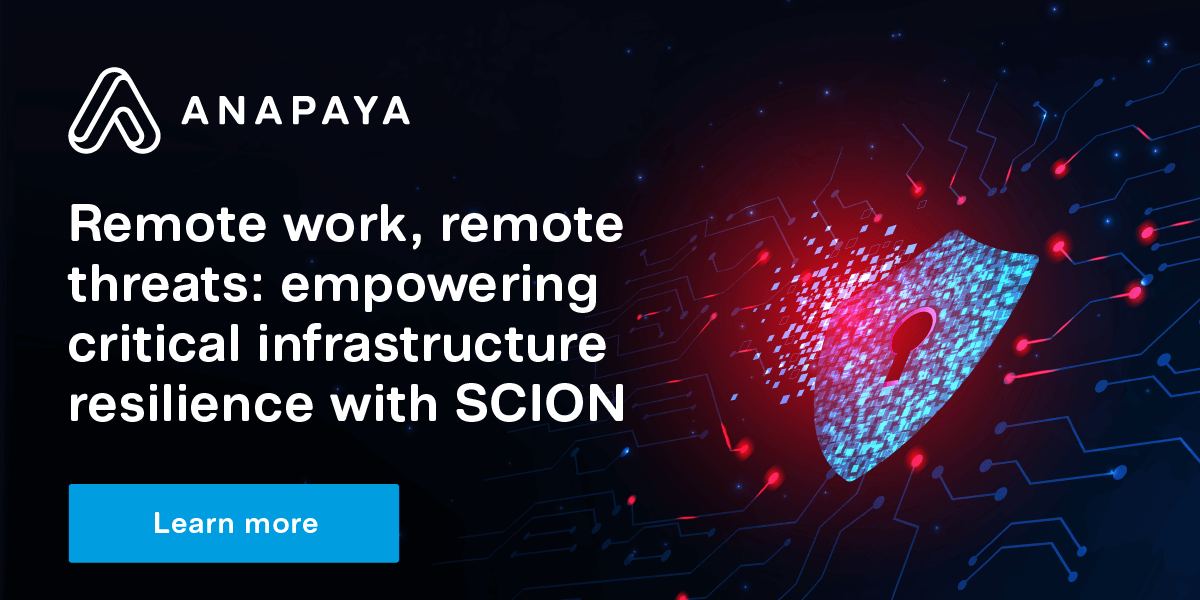The COVID-19 pandemic has brought a significant change in the way we work, with more organizations adopting remote work practices. Critical infrastructure is no exception, and today, we rely on remote workers to maintain and sustain essential services.
Transportation, power, water supply, and more all benefit from remote technology and workers every day, and while this shift has brought numerous benefits, it has also introduced new security challenges. In this blog, we will explore the critical role that remote workers play in ensuring the resilience of critical infrastructure - and the new danger involved.
Instant communication and reporting
Remote IoT devices and workers can provide up-to-the-minute reporting and communications in real-time. Workers who maintain infrastructure in even the most remote areas of the world now have the ability to send data or communicate as they work on-site.
This removes long turnaround times for maintenance and feedback, providing all the information and approval necessary to do effective and comprehensive work as needed.
The challenge - connectivity
The primary barrier to relying on networking to achieve instantaneous communication and reporting is when that network is suddenly removed. Lines fail, networks take on too much traffic, and even malicious actors have been known to purposefully disrupt services.
Enter SCION solution
SCION offers extreme internet integrity that is stable, efficient, and secure. In the highly unlikely case of service disruption or failure, it offers fast failover capabilities within milliseconds. This means that remote access can continue unhindered and with confidence.
The first line of cybersecurity
Remote workers are often the first line of defense against cyber threats to critical infrastructure - which are becoming increasingly common. When a DDoS attack strikes, data is intercepted, or information is leaked, the first to know about it are often the remote workers using the network in the first place.
While remote workers play a critical role in identifying and responding to potential security threats to critical infrastructure, they also open critical infrastructure up to attack. Thus, it is necessary to establish clear security protocols and guidelines for remote workers, such as using personal devices for work purposes, securing home networks, and handling sensitive data - but this isn’t always enough.
The challenge - greater areas of an overwhelming attack
As remote workers conduct their daily duties, they may have access to critical infrastructure systems and networks from their personal devices or home networks, making them more vulnerable to cybercriminals. This increased surface area of attack can open critical infrastructure to attacks with overwhelming force, such as DDoS attacks in the millions of Requests per Minute.
SCION solution
Unfortunately, no amount of well-thought protocols or disciplined training can prepare an organization or workers for attacks of this nature. The solution is not to defend against the attack but to avoid it entirely. SCION GATE provides this opportunity, operating where criminals are unable to see where or how you connect.
Independent resilience
In times of emergency, siloed, centralized locations are a vulnerability to critical infrastructure. Should one location be hit with a dedicated cyberattack or natural disaster, the entire infrastructure could be left reeling.
Critical infrastructure organizations that utilize remote working do not suffer from this threat and can rely on workers across the country to keep things running, even if one area is down. In short, by having remote workers distributed across different locations, critical infrastructure can increase its resilience to disruptions. Remote workers can continue to provide support, reducing the impact of the disruption on operations.
The challenge - more opportunities for malicious access
Having remote workers dotted around different locations may increase resilience but also increase the likelihood of cybercriminals gaining access to their network. With so many locations, IS providers, devices, and even public access internet, it’s never been more likely that a user with bad intentions can gain access and cause serious damage.
SCION solution
Keeping the right users on and shutting out the bad ones all comes down to control - and SCION offers that in abundance. With SCION, administrators can quickly identify suspicious activity and cut individual connections off fast. Helping prevent damages from actors with ill intentions.
Access to specialized expertise
Being part of a network means having access to experts without the need to accommodate logistics or location. Remote workers can provide critical infrastructure with access to specialized expertise that may not be available locally. This can be especially important in situations where specialized skills are required to maintain and operate complex systems or equipment.
In this way, critical infrastructure can instantly gain the skills, information, and knowledge they need.
The challenge - potential data leaks and theft
Dealing with experts and obtaining critically important data inevitably comes with the risk of that data falling into the wrong hands. It also encourages criminals who know how valuable that data is to steal it or even ransom it back to critical infrastructure organizations.
Elements such as ransomware, BGP hijacking, and other threats have to be considered when dealing with highly sensitive information, particularly for water supply, public health, or transport.
SCION solution
SCION renders your online critical services off the standard internet path, invisible to outside users, eliminating the threat of BGP hijacking. This means that any critical information you deal with - from experts or otherwise - will not have a target on it because criminals won’t know that it exists in the first place.
Cost savings
Remote workers can also help critical infrastructure save on costs by reducing the need for expensive office space and other facilities. This can be especially important for critical infrastructure that operates in high-cost areas.
Additionally, using remote workers saves on logistical actions and positions workers closer to where they are more needed without having to report to an office location. In many ways, this saves time, productivity, and costs.
The challenge - cybersecurity is expensive
When heavily reliant on connectivity, cybersecurity will naturally incur high costs. For example, Standard DDoS protection is currently €2,490.38 per month plus additional data charges, offering no complete security guarantees.
While this may sound expensive (and it is), the alternative is even more dire. The average data breach costs €4 million, and DDoS attacks can cost an average of €20,000.00 for every minute of downtime.
When you factor in the above, is remote work really cost-effective?
SCION solution
If organizations utilize SCION, they could avoid DDoS or BGP attacks, enabling them to reap the cost savings of remote work without the downsides. SCION hides your business access, removing your organization as a target entirely. With the additional security features, fast failover, and control it offers, it’s a complete solution for remote workers.
No risk, high reward
In conclusion, remote workers are becoming increasingly important for critical infrastructure. With the ability to work from home or other remote locations, they can help ensure the continuity of operations during crises, provide access to specialized expertise, increase resilience, and help save on costs.
As such, critical infrastructure organizations should consider implementing remote work policies and leveraging remote workers as part of their overall strategy for ensuring reliable and resilient operations. With the right planning and implementation, remote workers can play a critical role in the success of critical infrastructure operations in today's rapidly changing world.
SCION is a necessity for remote work today. It counters the many challenges that lie ahead for critical infrastructures and helps enable them to overcome the barriers to remote work quickly and easily.
Anapaya GATE is a solution designed for this purpose. If you would like to find out more about Anapaya GATE and how it can help protect your critical infrastructure, download the fact sheet here.










